
The Return of the Prodigal Son (Rembrandt) Wikipedia
Dimensions: 206 x 262 cm Order Oil Painting reproduction Wikipedia article References The Return of the Prodigal Son is an oil painting by Rembrandt. It is among the Dutch master's final works, likely completed within two years of his death in 1669.

FileRembrandtThe return of the prodigal son.jpg Wikimedia Commons
Details Title: Return of the Prodigal Son Creator: Rembrandt Harmensz van Rijn Creator Death Place: Amsterdam, the Netherlands Creator Birth Place: Leiden, the Netherlands Date Created:.
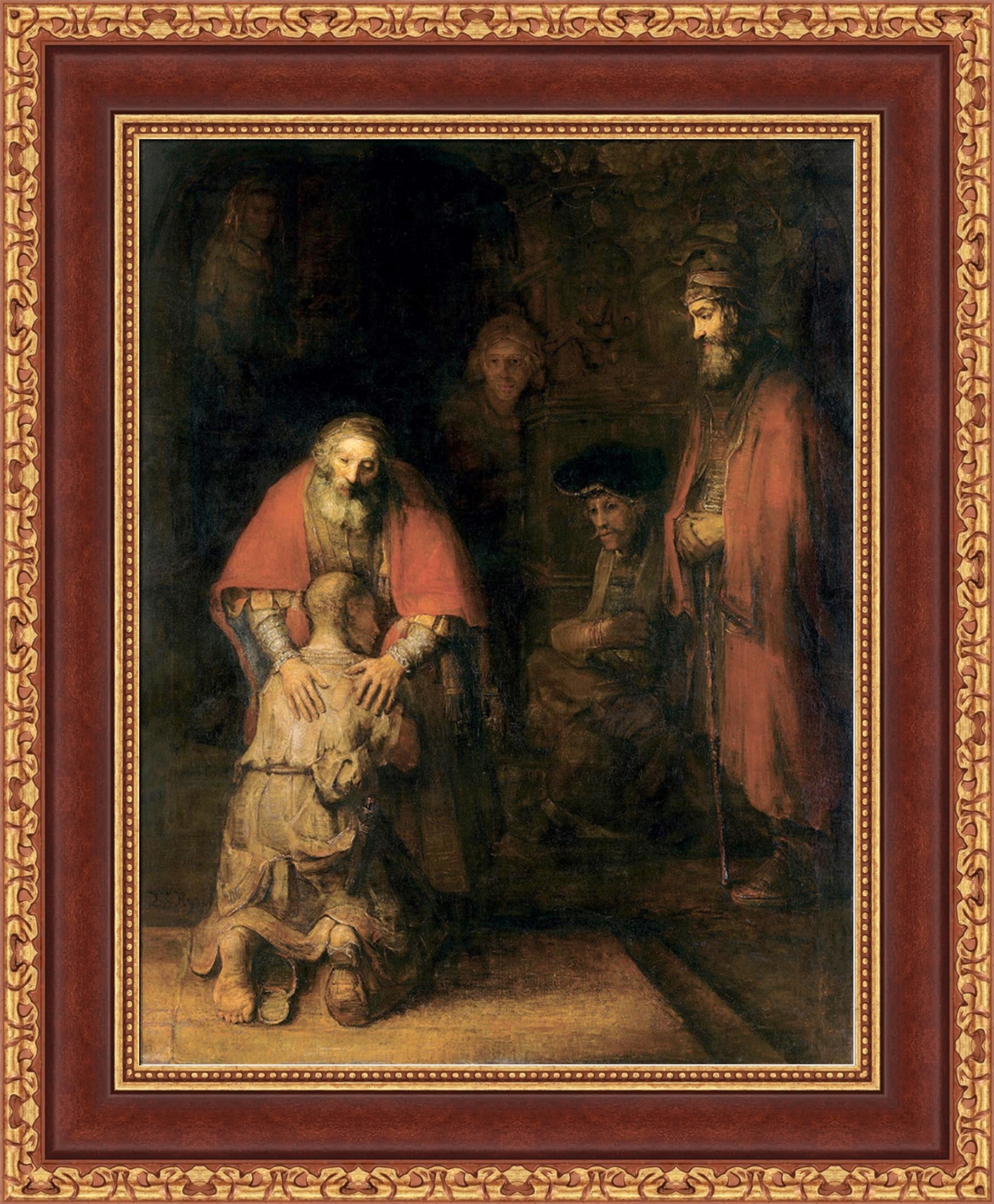
Rembrandt The Return of the Prodigal Son Framed Canvas Print 22"x27" (V0631) eBay
A chance encounter with a reproduction of Rembrandt's The Return of the Prodigal Son catapulted Henri Nouwen on an unforgettable spiritual adventure. Here he shares the deeply personal and resonant meditation that led him to discover the place within where God has chosen to dwell.
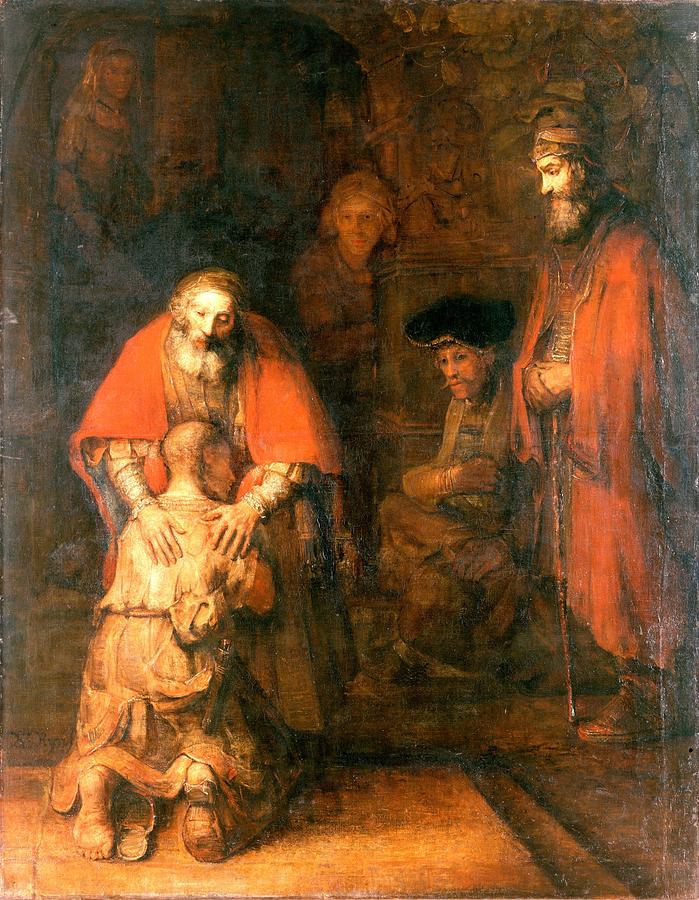
REMBRANDT Harmenszoon van RIJN The Return of the Prodigal Son 2 Painting by European Paintings
"The Return of the Prodigal Son" by Rembrandt van Rijn (1606-1669). Photo: Google Art Project/Public Domain. Rembrandt van Rijn was the greatest painter of the Dutch Golden Age — and to some, of any age. Known as both the "painter of light," and an astute observer of the human spirit, the artist used his unsurpassed technical skills.

Rembrandt The Return of the Prodigal Son, 1668 Art in Detail Tutt'Art Pittura
The Return of the Prodigal Son was produced by Rembrandt during his final years alive. Lots of art historians around the world agree that this painting is perhaps the magnum opus of.

Rembrandt_Return_Prodigal_Son Rembrandt, Fils prodigue, Musée de l'ermitage
The Return of the Prodigal Son ( Dutch: De terugkeer van de verloren zoon) is an oil painting by Rembrandt, part of the collection of the Hermitage Museum in St. Petersburg. It is among the Dutch master's final works, likely completed within two years of his death in 1669. [1]

Rembrandt Van Rijn The Return of the Prodigal Son Painting Reproductions, Save 5075, Free
The Return of the Prodigal Son is an oil painting by Rembrandt, part of the collection of the Hermitage Museum in St. Petersburg. It is among the Dutch master's final works, likely completed within two years of his death in 1669. Depicting the moment of the prodigal son's return to his father in the Biblical parable, it is a renowned work described by art historian Kenneth Clark as "a picture.

Rembrandt The Return of the Prodigal Son, 1668 Art in Detail Tutt'Art Pittura
The Return of the Prodigal Son is one of Rembrandt's masterpieces. This painter is renowned for his various works of art that are related to history or to biblical stories, and The Return of the Prodigal Son is considered to be one of his best pieces. This is an oil on canvas painting which he completed shortly before dying in 1669.

Rembrandt Return of the Prodigal Son Giclee Print on Canvas size 24x32 eBay
"The Return of the Prodigal Son" is among Rembrandt's final works, completed within two years of his death in 1669. The painting includes figures not related to the parable but seen in some of these earlier works. The woman at top left, barely visible, is likely the mother, while the seated man, whose dress implies wealth, maybe a friend.

Rembrandt’s Prodigal A Life Lesson
Rembrandt didn ' t care about attractive appearance of a human. His Prodigal S on is really tormented by life. His look is unpleasant. A ho le in the back of his cl othes. Sore feet. A bold skull. Rembrandt. Return of the Prodigal Son. Fragment. 1669. The State Hermitage Museum. And now, let ' s look at the Prodigal S on by Nikola y Losev.
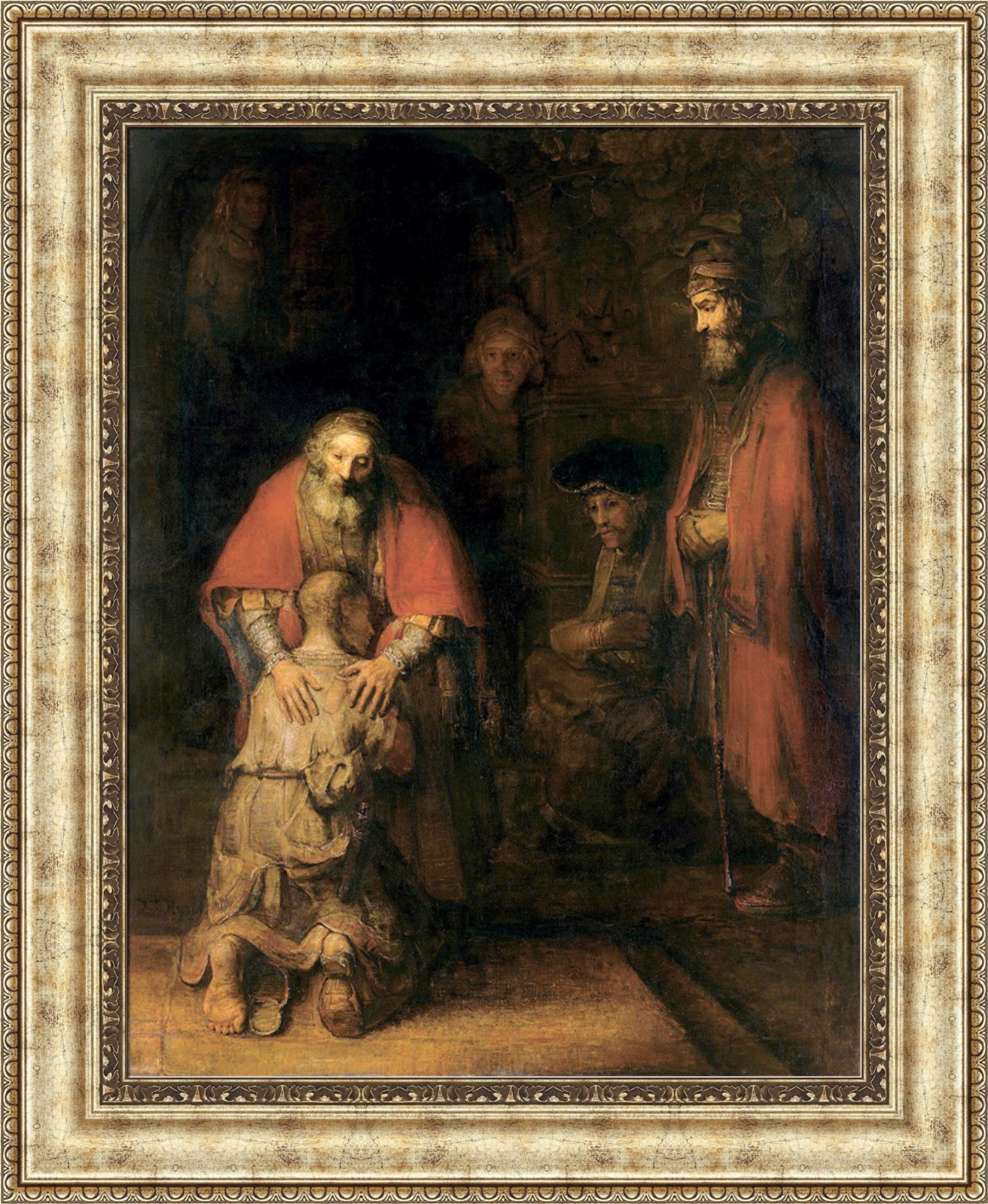
Rembrandt The Return of the Prodigal Son Framed Canvas Print 22"x27" (V0631) eBay
The Return of the Prodigal Son, 1669 by Rembrandt The Return of the Prodigal Son is among the Rembrandt's final works, likely completed within two years of his death in 1669.

Return of The Prodigal Son, c.1668 by Rembrandt Van Rijn Art Print, 18 x 24 inches
1. It was one of the final paintings that Rembrandt ever worked on Rembrandt Harmenszoon van Rijn was born in 1606, a time now referred to as the Dutch Golden Age. Also known as the "Dutch Miracle," this was a period in which the Dutch Republic was one of the most advanced nations in the world.
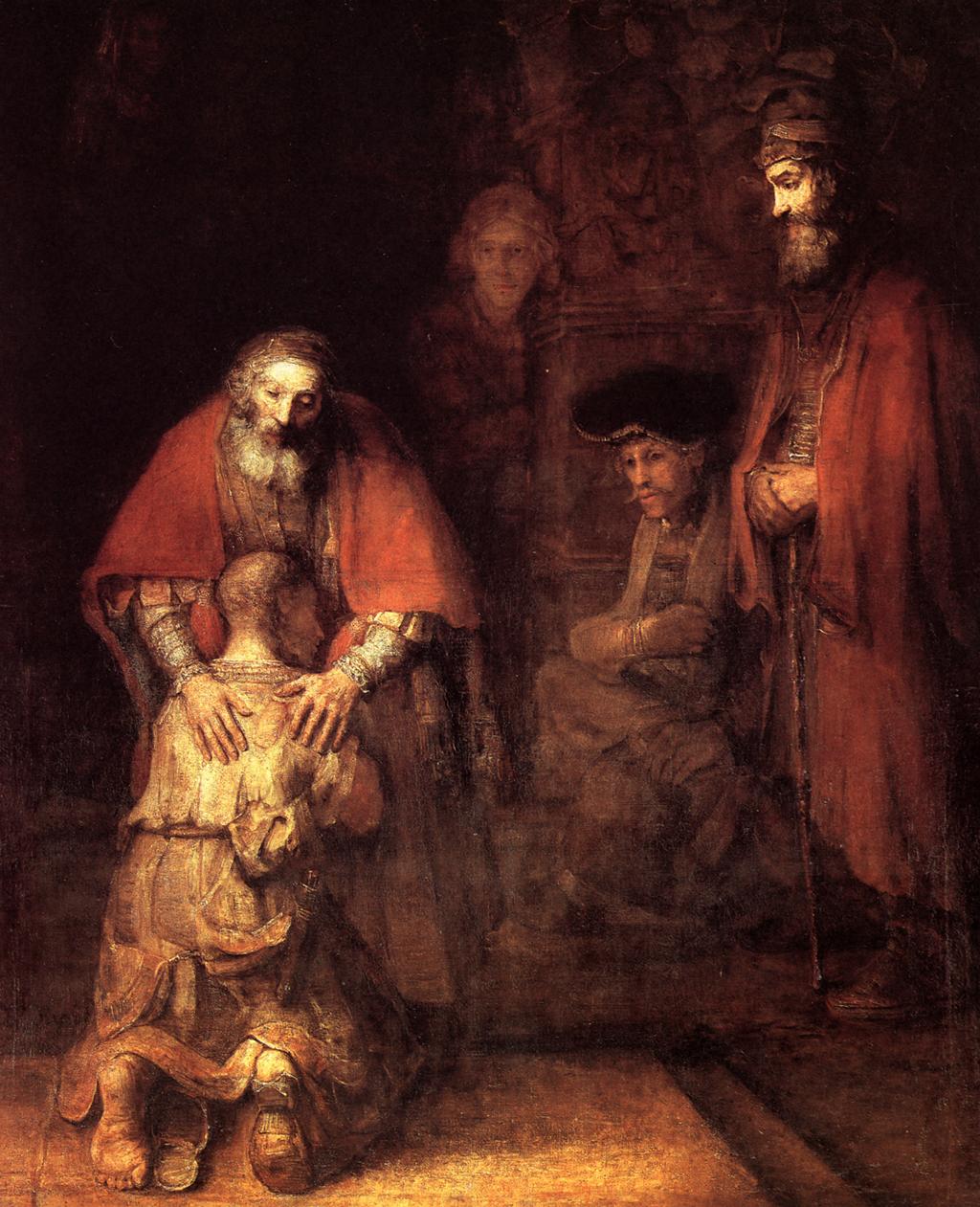
The Return of the Prodigal Son, 1669 Rembrandt
says Rembrandt at a young age "had all the characteristics of the prodigal son: brash, self-confident, spendthrift, sensual, and very arrogant" (page 26 hc/30 sc). The artist earned a lot, spent a lot, and lost a lot. The painting is about the "return" of the lost son. In order to "return", one must have left something behind.
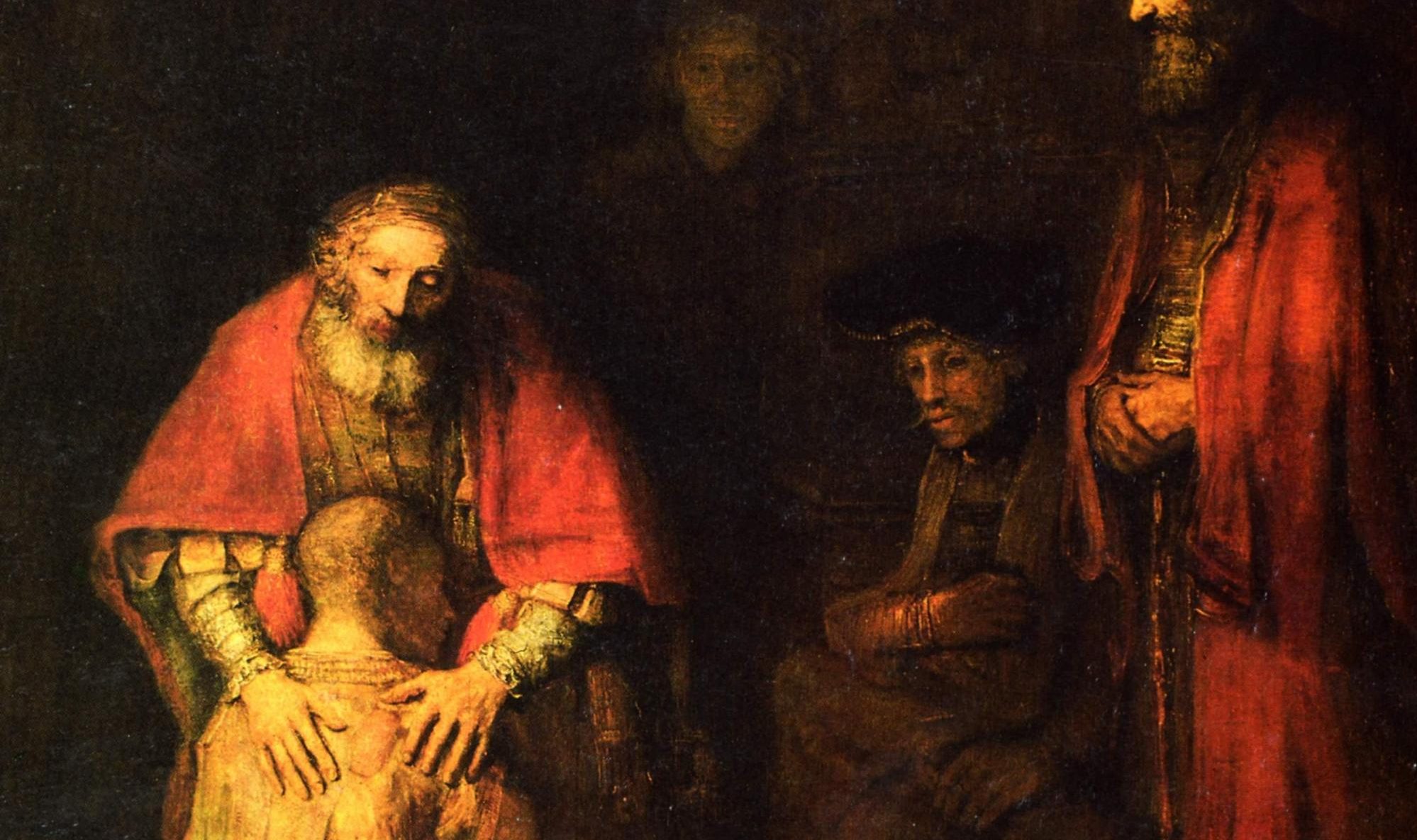
Rembrandt's Painting The Return of the Prodigal Son Rachel Shockey Studio
Directed by: Meryam Joobeur. Written by: Meryam Joobeur. Produced by: Maria Gracia Turgeon, Habib Attia. Mohamed is deeply shaken when his oldest son Malik returns home after a long journey with a mysterious new wife. 'The return of the prodigal son' was created in 1636 by Rembrandt in Baroque style. Find more prominent pieces of religious.

The Return of the Prodigal Son by Rembrandt van Rijn Rembrandt prodigal son, Rembrandt
Rembrandt van Rijn's The Return of the Prodigal Son is, by far, one of the most evocative of these "visual homilies." One cannot be left unmoved before this unforgettable image, permanently housed at the Hermitage Museum in St. Petersburg, Russia.

Pin on Rembrandt!
Amuze Art Lecture #3: A detailed discussion of The Return of the Prodigal Son, painted by Rembrandt in 1668/1669.This work is on display in the Hermitage Mus.